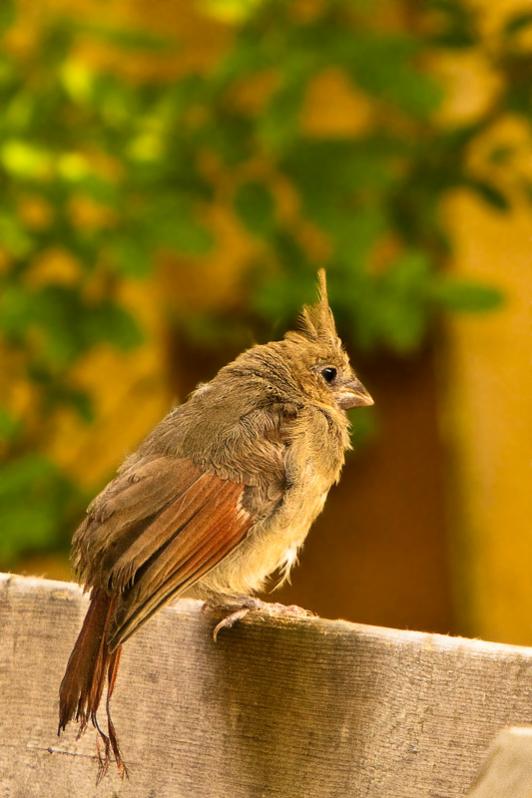
The heart of their range is the many edges of the deciduous forest of the central and eastern U.S., but their adaptation to human yards and farms has allowed them to spread west across much of the Great Plains. They also have not been able to colonize much of Canada, perhaps because of the extreme winter weather. Don’t look for them west of the Rocky Mountains, except in southern Arizona and New Mexico they are a very rare vagrant to California and Oregon. Range: Eastern and central North America, extending from Maine and Nebraska south to Florida and Texas, then southwest into southern Arizona and virtually all of Mexico. Closely related is the Brazilian Cardinal of the genus Paroaria that many of you may have seen in Hawaii or Florida, where it has been introduced from its South American home range. As with many of our Ohio birds, there are more species of cardinals in the tropics than here, including the Vermillion Cardinal of Columbia and Venezuela and the Pyrrholuxia (or Mexican Cardinal) of Texas, Arizona, and Mexico.

Cardinals are in the subfamily Cardinalinae, the cardinal-grosbeaks, which include a wide variety of big-billed fruit- and seed-eaters of the New World. It was constructed in the 1980s after DNA evidence showed that all of these disparate groups of birds were actually quite closely related. This is the huge family of grosbeaks, sparrows, buntings, wood-warblers, and tanagers. Relationships: Cardinals are members of the Family Emberizidae. Northern Cardinal in fir tree – Photo Susan Young Both the common and genus names refer to the rich red robes and caps of Catholic high-priests called cardinals, but this color is only in mature males (of the bird, that is). However, their crest is shaped more like the miter of a bishop than the skullcap of a cardinal. One of the most ubiquitous birds of eastern North America, The Northern Cardinal has benefited from an uncanny ability to adapt to human-modified habitats.
#Juvenile cardinal skin#
In cold, rainy weather, the bare skin would leave the bird unprotected against threatening elements. The bare skin exposes the bird to more mosquito bites which, of course, makes it more susceptible to West Nile virus, perhaps causing the bird's demise. Whether or not the condition returns is unknown, but surely it's possible.ĭoes the bird suffer? Perhaps. So the feathers grow back in short order. In fact, Bill Hilton at Hilton Pond, South Carolina, bird banding station has captured lizard-heads, recorded the birds' conditions, released them, and then recaptured them at later dates to find the birds in perfectly lovely plumage.

Of course, we backyard bird lovers then wonder what happens next. In any case, the cardinal loses its head feathers, exposing the black skin underneath. There is scientific argument about whether the microscopic mites burrow into the cardinal's skin and cause the feathers to drop or whether the biting critters cause sufficient itching that the cardinals scratch and scratch until they tear out their own feathers. Okay, if not part of a natural molt, then, what's the problem? Most authorities agree that the culprit is feather mites or at least mites of some kind. For instance, if they lose one primary flight feather on each wing, those will re-grow before the birds lose the next symmetrical pair of primary flight feathers on each wing. Typically during any bird's molt, it loses only a few feathers at a time, replacing them before losing more.

Some, on the other hand, molt at least part of their feathers twice a year, thus allowing them to change color from drab winter to breeding-bright summer plumages-like goldfinches. Some species shed their feathers and re-grow news ones once a year-like cardinals, chickadees, titmice, doves, and robins.

So what's with these black-headed cardinals?Īll birds molt. Of course, birds are indeed distant relatives of dinosaurs, but no one expects to see an ancient monster, or even a diminutive derivative of one, at his backyard feeder! Some queries wonder if the photos depict a new species for the yard.Ĭertainly the pics show a less-than-elegant bird, something akin to a lizard's head on a feathered body, a sight more reminiscent of a dinosaur than of a local yard bird. Every year without fail, several emails with accompanying photos come to my attention asking about creatures that look like weird black-headed cardinals.


 0 kommentar(er)
0 kommentar(er)
